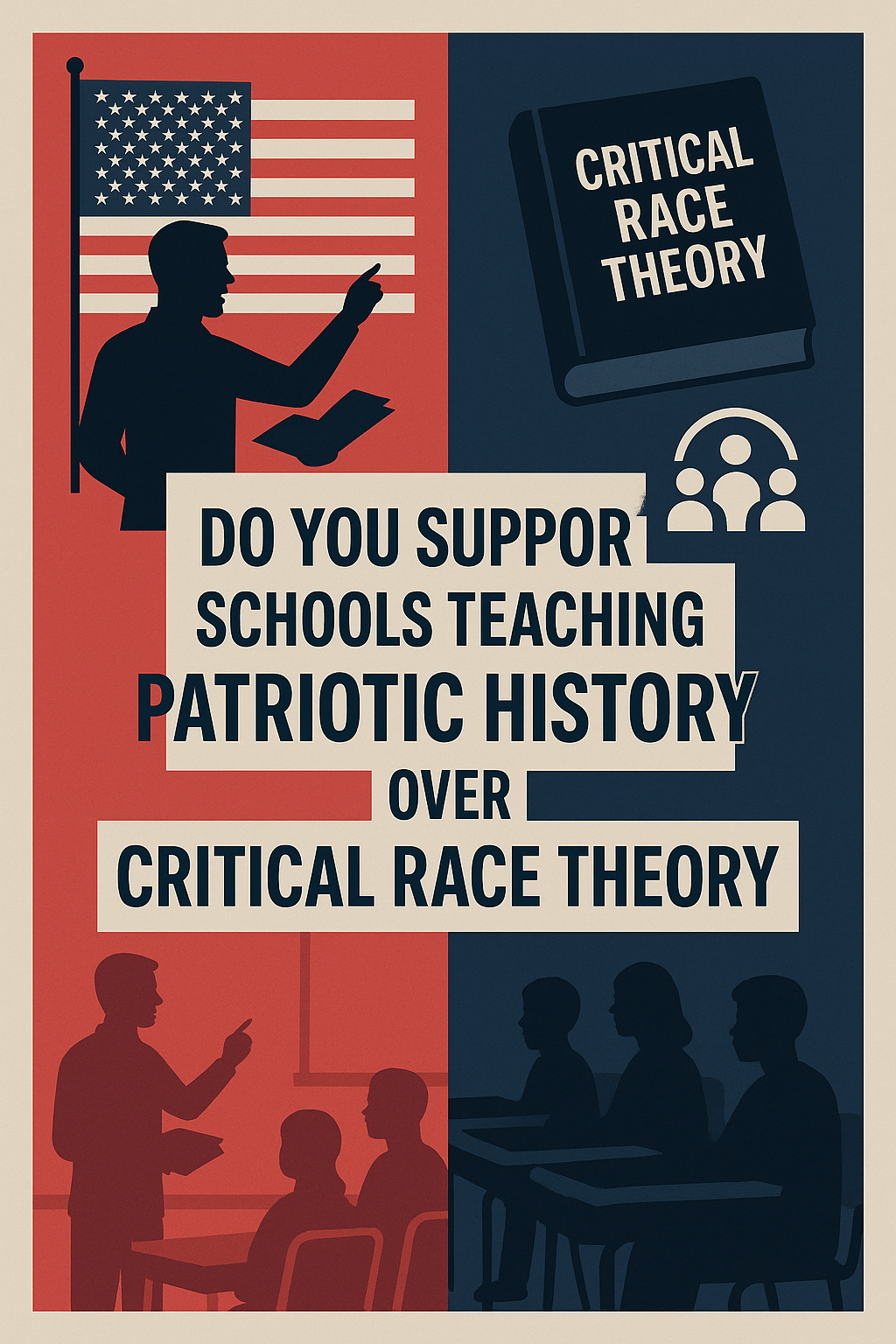In classrooms across the United States, an intense battle is underway over how the next generation should learn the history of their country. The latest flashpoint in this educational and cultural war is centered around one deeply divisive question: Should schools teach patriotic history instead of critical race theory (CRT)?
Supporters of patriotic education argue that children should grow up with a sense of national pride, understanding the great sacrifices, triumphs and values that shaped America. On the other side, proponents of CRT claim that history must be told honestly and fully, including the harsh truths about racism, inequality and systemic oppression.
The question is no longer just academic. It’s political, emotional and deeply personal for millions of parents, teachers, students and policymakers.

Understanding the Debate
Patriotic history emphasizes the achievements of the United States. It focuses on foundational principles such as freedom, democracy, and the Constitution. This approach often highlights stories of heroism, innovation and moral progress, portraying America as a land of opportunity and courage.
Critical race theory, in contrast, is an academic concept that explores how racism is embedded in legal systems and societal structures. While it began in law schools, CRT-inspired teachings have influenced K-12 education, often under the umbrella of diversity and equity programs.
Opponents of CRT claim it divides students by race, encourages shame or guilt among certain groups, and undermines a shared national identity. Defenders argue it promotes empathy, awareness and a fuller understanding of American history, especially regarding the treatment of minorities.
Why Patriotic Education Is Gaining Momentum
Conservative leaders and parents across the country are calling for a return to patriotic education. Many cite concerns that CRT creates an overly negative view of America and sows division among children. In states like Florida, Texas and Tennessee, new laws are being introduced or passed that restrict how race-related topics can be taught in classrooms.
Former President Donald Trump launched the “1776 Commission” to promote a more traditional, patriotic curriculum. Although the commission was short-lived, the movement behind it continues to grow, with school boards and state legislatures responding to public demand.
Supporters of patriotic education believe young Americans should be inspired, not ashamed. They argue that children should be taught to love their country before they are asked to critique it. The goal is not to ignore the darker chapters of history, they say, but to emphasize the greatness of the American experiment and the progress it has made.
The Role of CRT in Schools Today
Despite the controversy, many schools insist they are not teaching CRT as a formal academic theory. Instead, they say they are incorporating inclusive history—teaching about slavery, segregation, civil rights, and the lived experiences of different racial and cultural groups. This, they argue, is simply honest history.
Critics remain unconvinced. They point to curriculum materials, training programs, and classroom discussions that they believe promote a divisive or overly negative narrative of America. For many, it’s not just about what is being taught, but how it’s being framed and why.
What Do Parents Want?
The real power in this debate lies with parents. Across school board meetings and online forums, parents are making their voices heard. Some demand that CRT-related concepts be banned from classrooms altogether. Others fight for more culturally diverse and accurate education.
Polling shows a complex picture. A majority of Americans support teaching about racism and slavery, but many are uncomfortable with the idea that America is “systemically racist.” This suggests that while people want students to learn hard truths, they also want those truths balanced with hope, unity and national pride.
Educators Caught in the Crossfire
Teachers and administrators are increasingly finding themselves in impossible positions. They are expected to deliver education that is historically accurate, emotionally sensitive and politically neutral—all while navigating conflicting laws and intense public scrutiny.
Many educators believe they should be trusted to teach complex topics with professionalism and care. But in today’s climate, even a single lesson can ignite controversy and draw national headlines.
What Is the Goal of History Education?
At its core, the debate boils down to a single question: What is the purpose of teaching history? Is it to instill patriotism and national unity? Is it to promote critical thinking and social awareness? Can both be achieved at the same time?
Proponents of patriotic education argue that love of country is foundational to civic engagement. Without pride in their nation, students may lose faith in democracy itself.
Meanwhile, supporters of CRT and inclusive history maintain that understanding past injustices is essential for building a better future. They argue that patriotism should not require denial or silence about uncomfortable truths.
Finding a Balanced Approach
Some educators and parents believe a middle ground is possible. A curriculum can highlight American ideals while also acknowledging where the nation has fallen short. It can celebrate the Constitution and the Founding Fathers while also discussing how those ideals were not always extended to all citizens.
Programs like “We the People” or “Facing History and Ourselves” attempt to strike this balance by encouraging both civic pride and historical analysis.
The challenge is in the details—what stories are told, whose voices are included, and how students are encouraged to think about their country.
Conclusion
The future of American education is being written now, not just in textbooks but in statehouses, classrooms and dinner tables. Whether the emphasis is placed on patriotic history, critical race theory or something in between, one thing is certain: the next generation will be shaped by the decisions we make today.




